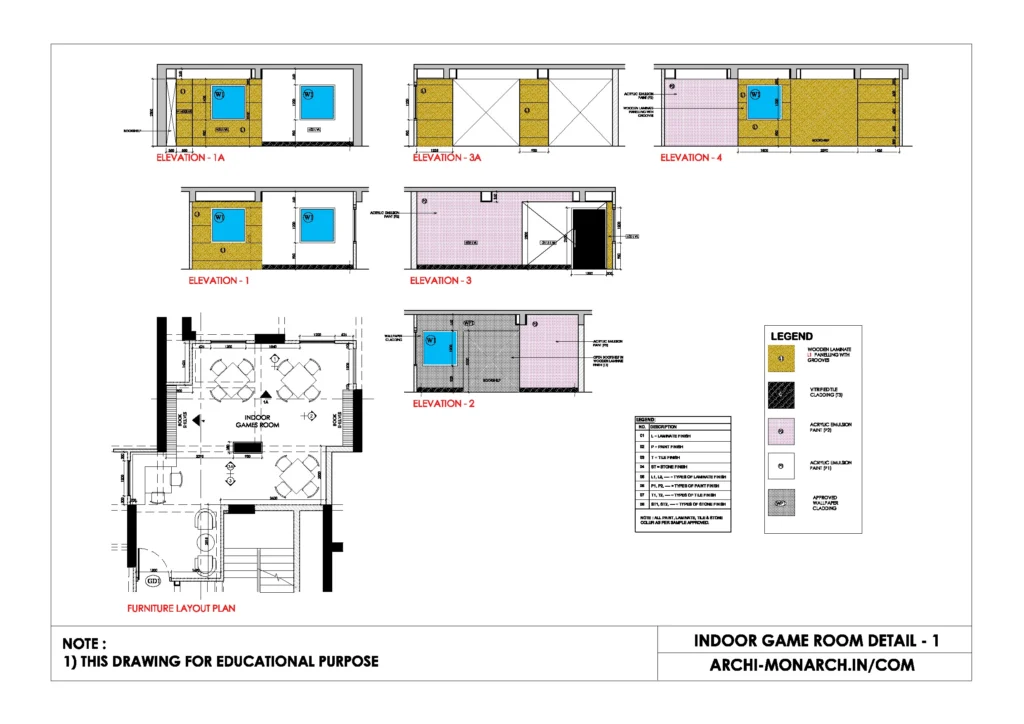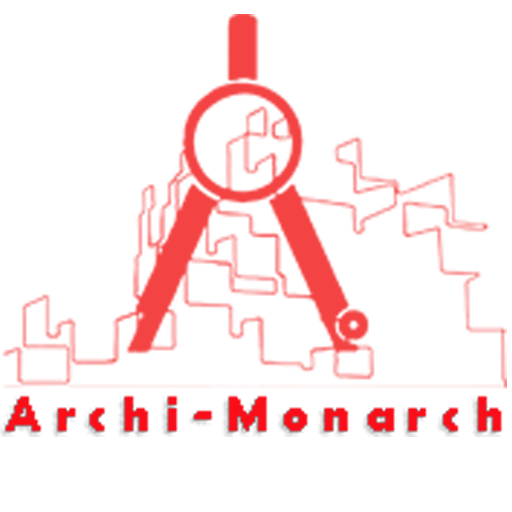An indoor game room in architecture is a dedicated space within a building designed for recreational activities and entertainment. It is commonly included in residential homes, clubs, hotels, and community centers to provide a comfortable and controlled environment for various indoor games such as table tennis, billiards, board games, video games, or even VR setups.
Architecturally, the design of an indoor game room focuses on spatial organization, acoustics, lighting, ventilation, and durable, easy-to-maintain materials.
The layout often promotes interaction and relaxation, with sufficient circulation space and storage for equipment. Depending on the target users—children, adults, or mixed—the room’s aesthetics and functions can be customized to enhance the gaming experience and social engagement.
If you want to know about the submission drawing or lift lobby and atrium detail or standard detail, please click the link.
Image of Indoor game room detail and downloadable (in DWG) link below

Indoor game room detail drawing – 1
In construction, indoor game room detail drawings are essential components of architectural documentation, providing precise information for the implementation of design elements.
These drawings typically include floor plans, elevations, sections, and sometimes 3D views that show the layout and specifications of furniture, game equipment, lighting, wall finishes, and acoustic treatments.
Here are the key components typically included in an indoor game room detail drawing:
- Floor Plan: Shows the overall layout, including the placement of game tables (e.g., pool, foosball), seating, storage units, and circulation space. Dimensions, flooring types, and electrical outlet locations are also indicated.
- Elevations: Provide vertical views of the walls, showing finishes, shelving, TVs or gaming consoles mounted on walls, and window/door placement.
- Sections: Cut-through views showing ceiling height, material layers (e.g., acoustic panels, false ceiling), and how different elements interact vertically in the space.
- Furniture and Equipment Details: Detailed dimensions and positioning for built-in or fixed game equipment, custom cabinetry, and furniture that support gaming and relaxation.
- Lighting and Electrical Layout: Indicates light fixture types (ambient, task, or decorative), their positions, and control switches. Also includes wiring for electronic gaming consoles or screens.
- Acoustic and HVAC Details: In game rooms, sound insulation and ventilation are crucial. Details may include soundproofing materials, acoustic panel layout, and air conditioning ducting.
- Material and Finish Schedule: A table or set of notes detailing the materials used (e.g., rubber flooring for sports, sound-absorbing wall panels) with specifications and finishes.
These drawings ensure that contractors, electricians, and interior designers are aligned during the construction process, helping deliver a functional, comfortable, and aesthetically pleasing indoor game room.
Our tips to help you improve your architectural Indoor game room detailing.
